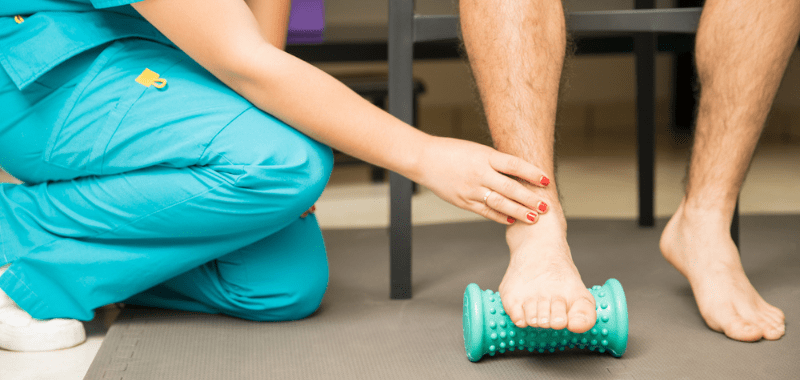Tabla de contenido
Plantar fasciitis is one of the major causes of heel pain when walking, jogging, and running. Knowing how to avoid it is vital.
Summer, the No. 1 cause of plantar fasciitis?
Although it may sound confusing, this time of the year is one of the most responsible for this pain; this is because, thanks to the high temperatures and circumstances that surround people in this season, they tend to use sneakers and shoes that are more accessible and with less support in the sole or even tend to be barefoot, so the foot is usually exposed to less cushioning.
A good example of this is sandals/flip-flops and open-toed shoes that base their support and grip on the ankle, heel, or toes and force the toes to remain hooked to keep the shoes on.
This type of toe position, coupled with poor foot support during summer, is the perfect combination for developing plantar fasciitis.
Pathology
Recall that plantar fasciitis is a pathology that constitutes inflammation of the foot in the plantar fascia, a thick area of tissue that runs through the entire sole area of the foot and connects the toes to the heel bone.

In very extreme cases, this can become a serious problem if not treated properly. However, it should not be seen as something far away since it is one of the three most common heel pains when running or walking. This makes its prevention practically indispensable knowledge for anyone, but especially for runners.
Footwear recommendations
If you are in summer or simply want to wear a comfortable shoe indoors, Crocs are an ideal choice. They provide the ideal support for the sole of the foot, and although they have a grip on the ankle, their technology provides a good grip and prevents the toes from having to “hook.”
Usually, it tends to recommend the use of wide shoes with anatomy that allows them to adapt to the foot and a heel size greater than two centimeters, avoiding the aforementioned that do not have a strong grip and do not respect the shape of the foot.
Exercises for prevention and cure
Stretching and massage with creams after exercise or after a long day are daily routines that can help prevent plantar fasciitis or even attack it if it is already present. They reduce inflammation in the area and help circulation.
When stretching, it is important to focus on the lower part of the foot and work more strongly on the plantar fascia.

Another beneficial exercise is rolling a round, soft object with the foot, such as a tennis ball, a plastic bottle, a cardboard tube, or any other object with these characteristics.
Of course, all this is always under a physiotherapist or specialist who can supervise the case.
Looking for a plan that trains with you, not against you?
At running.COACH, we don’t just build a schedule. We create a smart, living plan that evolves with you. It understands your level, your race goals and your real life. Whether you sync your GPS watch or train straight from our iOS or Android app, your plan adjusts automatically as you improve.
From day one, you’ll feel the difference:
- A fully personalized, dynamic plan designed for you.
- Automatic sync and effortless workout tracking.
- Real-time updates when life happens, including missed sessions, new races or schedule changes.
- Simple, science-backed guidance to train smarter and recover faster.
🎁 Start today and enjoy your first 30 days free.
Because the best training plan isn’t one you follow. It’s one that follows you.app.











0 Comments